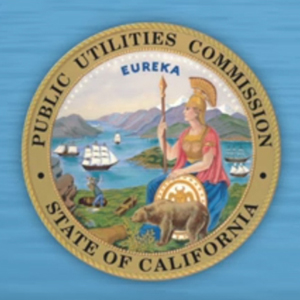On February 3, California Water Service Company (Cal Water) Vice President of Regulatory Matters & Corporate Relations Paul G. Townsley testified on the success of his company’s low-income rate assistance (LIRA) programs at a Joint Oversight Hearing of the California Assembly Aging and Long-Term Care and Utilities and Commerce Committees. The informational hearing explored the effects of water rates on California’s aging population, low-income programs and criteria for rate assistance, as well as the California Public Utilities Commission’s (CPUC) oversight role of investor-owned water companies (IOWCs) and other mechanisms to maintain water affordability.
Townsley’s comments centered on the efforts to assist low-income customers in one of its distressed districts, Lucerne, in Lake County. The hearing came in the wake of Assembly Bill 1434, introduced by Assembly Member Mariko Yamada (D-Woodland) on January 7, which would require the CPUC to implement a program to provide rate relief for low-income customers of a water corporation. Specifically, the CPUC would be required to consider and possibly implement a program that would include a discount of not less than 20 percent of the low-income customer’s total bill amount.
Townsley explained that Cal Water has been working to increase the discounts afforded by the company’s LIRA and Rate Support Fund (RSF) programs, which provide discounts to customers who live in high-cost areas. The programs are funded through a surcharge on other customers’ bills companywide. He also suggested that additional efforts to address affordability issues should be funded from the state’s general revenues. He noted that a proposed settlement agreement with the Office of Ratepayer Advocates (ORA) calls for the Lucerne customers to receive a LIRA discount of up to $30 a month while, at the same time, they would see a significant RSF rate reduction for the first 7,480 gallons of water used each month (typical monthly usage in Lucerne for a residential customer is about 3,740 gallons).
Townsley noted, “Individuals in lower-income urban areas, where the cost of water utility service is lower because of economies of scale, could end up providing significant subsidies to rural areas where the cost of water utility service is substantially higher. Establishing a statewide program funded from general revenue would work to minimize these countervailing effects.”
The briefing paper for the joint hearing also supported the notion that a statewide LIRA program could be a valuable asset to California ratepayers emphasizing that “standardized discounts (to low-income ratepayers) and surcharges (to non-participating customers) would increase transparency and eliminate the convoluted patchwork of existing LIRA programs.”
Townsley referred to a report by the Pacific Institute, an environmental research firm based in Oakland, California, which found that water utilities are “a rising cost industry as a result of deteriorating infrastructure, stricter regulations and climate change.”
Also testifying was General Manager Robert S. Roscoe of Sacramento Suburban Water District. In his comments about the need for water providers to establish rates that cover the actual cost of providing high-quality water, Roscoe emphasized that for decades, water rates were artificially low and did not reflect the true cost of the services received nor were revenues sufficient to set aside funds for future infrastructure renewal and replacement.
During his comments, Roscoe referenced the American Society of Civil Engineers’ decision to drop California’s grade from a C+ to a C on its annual report card for drinking water infrastructure. The report card noted, “Significant investments are still needed to address renewal and replacement, maintenance, security and reliability for the state’s water infrastructure. The annual investment needed for each of the next 10 years is estimated to be $4.6 billion.”
At the joint hearing, Roscoe remarked, “The water industry in California faces continuing rate pressure from ever-changing regulation. While the public expects and deserves the highest quality water possible, rate impacts from these regulatory decisions commonly have disproportionate effects on small systems where a small number of customers must bear the burden of expensive new infrastructure and economies of scale do not exist.”
Roscoe continued, “The water industry is experiencing cost increases that far exceed the normal consumer price index. The fact that water utility bills are becoming a larger and larger percentage of household income is not surprising. Unfortunately, I believe this trend will continue, and this will only add to our difficulties serving reliable water supplies that are considered affordable.”
Roscoe also cited several other avenues to address water rate affordability such as additional customer assistance with conservation efforts, more funding for next-generation meter reading and monitoring systems, working to reduce energy costs and providing additional funding to the State Drinking Water Program to assist small, disadvantaged communities with cost-effective solutions.
Townsley testified that grants and low-interest loan programs should be available to all water utilities, regardless of their ownership model. Roscoe noted that state bond funds are retired by all taxpayers of the state regardless of whether their water provider is publically or privately owned.
Because the cost of providing water service is increasing, all Californians will face higher water rates. And despite the fact that IOWCs provide LIRA programs, which are subsidized by ratepayers who don’t actually participate in the program, IOWCs serve less than one-fifth of the population. Based on these observations, Townsley urged, “The time may have come for a statewide, low-income rate assistance program, applicable to all water utilities to ensure that all Californians who are struggling to pay their water bills get the help they need, whether they are served by a government- or investor-owned water provider.”
Rami Kahlon, Director of the CPUC’s Division of Water and Audits, and Danilo Sanchez, Program and Project Supervisor for the ORA, both testified on how the CPUC works to balance water rate increases and low-income affordability. Kahlon explained how the CPUC is addressing low-income assistance through its Water Action Plan, while Sanchez explained the general rate process and how ORA works with the utilities to integrate the LIRA programs into their rate structures while minimizing rate increases overall.
During the questioning of the witnesses by the committee members, Assembly Utilities and Commerce Chair Steven Bradford (D-Inglewood) noted that water rates are dramatically increasing, the entire rate case process is a matter of trust and IOWCs, the CPUC and ORA all must earn that trust from the customers. Aging and Long-Term Care Committee Chair Yamada said she hopes her bill will be part of a statewide solution.
Utilities and Commerce Committee member Bill Quirk (D-Hayward) noted that CPUC-regulated water utilities were in a much better position to offer LIRA programs than their public water agency counterparts. He added that the customers in the Lucerne District were fortunate to have Cal Water as their water provider because of the steep discounts afforded by the LIRA and RSF programs.





